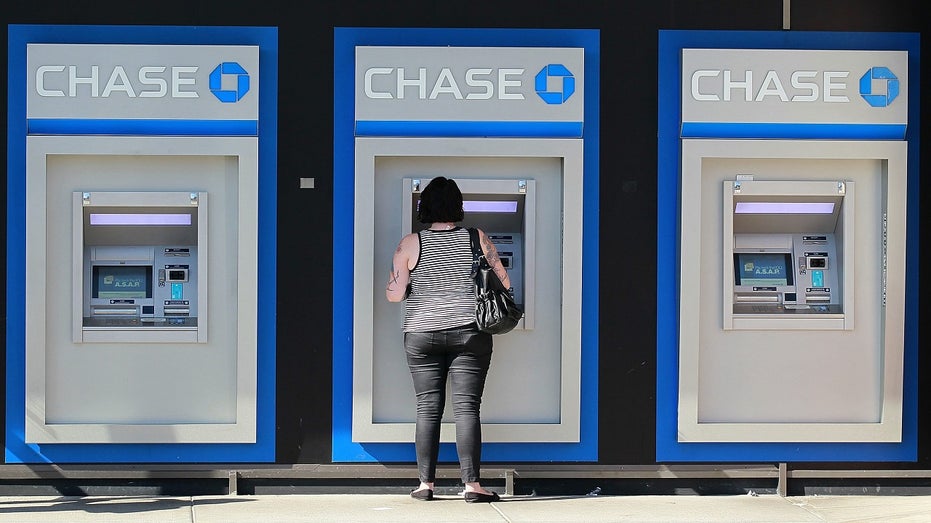Survey finds overdraft, non-sufficient funds fees are down, ATM fees up
Some banks have reduced or gotten rid of overdraft or NSF fees
Overdraft and non-sufficient funds (NSF) fees are down from 2021, though many banks continue to charge them. Meanwhile, combined ATM fees reached a three-year high.
The average overdraft fee in 2022 decreased 11% to $29.80 from the record-high average of $33.58 in 2021, Bankrate.com's annual Checking Account and ATM Fee study published Wednesday reported. That is the lowest it's been since 2009.
Bankrate.com also found the average NSF fee went down 21%, from a record $33.58 in 2021 to $26.58 this year, which is the lowest it's been since 2004.
Some banks, including Bank of America, Capital One and Citibank, have either reduced or gotten rid of overdraft or NSF fees. Despite those moves, such fees remain prevalent, with 96 percent of accounts surveyed still charging for overdrafts and 87% still doing so for NSF, according to Bankrate.com.

A Bank of America ATM is seen in Winchester, Massachusetts, on Feb. 3, 2021. (AP Photo/Elise Amendola / AP Newsroom)
"The same advice for avoiding overdrafts still applies," Greg McBride, Bankrate's chief financial analyst, said in a statement. "Monitor your available account balance before initiating transactions, set up a link to a savings account with a modest balance that can be used to cover the shortfall, and set up alerts via email or text to notify you if the balance gets below a certain threshold so you can proactively avoid having your payment declined."
Overdraft fees can differ based on where someone lives, with Miami having the lowest average, $21.05, and Pittsburgh having the highest, $35.50, the study found.
Meanwhile, the combined ATM fees total — the one charged by a customer's own bank for using an out-of-network ATM and the one charged by the ATM owner — hit $4.66 in 2022, a three-year high, Bankrate.com reported.
In 2022, the average fee banks levied against their own customers for using out-of-network ATMs was $1.52, up one cent from last year. The fee banks charged for non-customers to use their ATMs hit a new record high of $3.14, an increase of 1.5%, according to Bankrate.com.
"Staying within your bank's ATM network is the sure-fire way to avoid fees," McBride said. "If going outside the network, you run the risk of being hit with fees from both your bank and the ATM-owning bank."
Here are the five cities with the highest average total ATM fees:
- Atlanta: $5.38
- Detroit: $5.29
- Phoenix: $5.24
- Cleveland: $5.23
- Pittsburgh: $4.98
Here are the five with the lowest:
- Los Angeles: $4.21
- Seattle: $4.23
- Minneapolis: $4.24
- Cincinnati: $4.27
- Boston: $4.35
The practice of getting cash back when checking out with a debit card at a grocery store or other participating shop can also help with avoiding ATM fees, according to Bankrate.com.
OVER HALF OF AMERICANS ARE DIPPING INTO SAVINGS OR GOING INTO DEBT TO COVER EXPENSES: NRF
In addition to looking at overdraft, NSF and ATM fees, Bankrate.com's annual study also examined the fees associated with interest and non-interest checking accounts.

A customer uses an ATM outside a Chase bank office in Oakland, California, on Oct. 13, 2011. (Justin Sullivan/Getty Images)
Interest checking accounts averaged a monthly fee of $16.19, a roughly 1% decrease from 2021, according to Bankrate.com. The average balance required to avoid the monthly fee also went down slightly, from $9,896 to $9,658, but remained above 2020's average of $7,550.
Three-quarters of interest checking accounts require some form of balance requirement. The percentage of interest checking accounts that will waive the fee based on direct deposit increased by 3 points from 2021 to 15%. Meanwhile, the percentage of free interest checking accounts remained unchanged from 2021: 7%.
Bankrate.com found the monthly average fee for non-interest checking accounts to be $5.44, a 7% increase from last year and the highest it has been since 2019. The average balance requirement to avoid the fees is $539.04, up 6.4%.
53% of non-interest checking accounts will waive the monthly fee based on direct deposit, account balance, transaction activity or a combination thereof. About 99% of these accounts are free or can become free, with the predominant fee waiver being direct deposit (44%).
CLICK HERE TO READ MORE ON FOX BUSINESS
About 46% of non-interest checking accounts do not have a monthly fee or a balance requirement. That figure is down two points from last year.
Two ways to avoid monthly checking account fees are to maintain the minimum balance or utilize direct deposit. If a person can't meet their bank's requirements to waive the fees, they can avoid them by switching to a financial institution that offers free checking accounts, according to Bankrate.com.




















